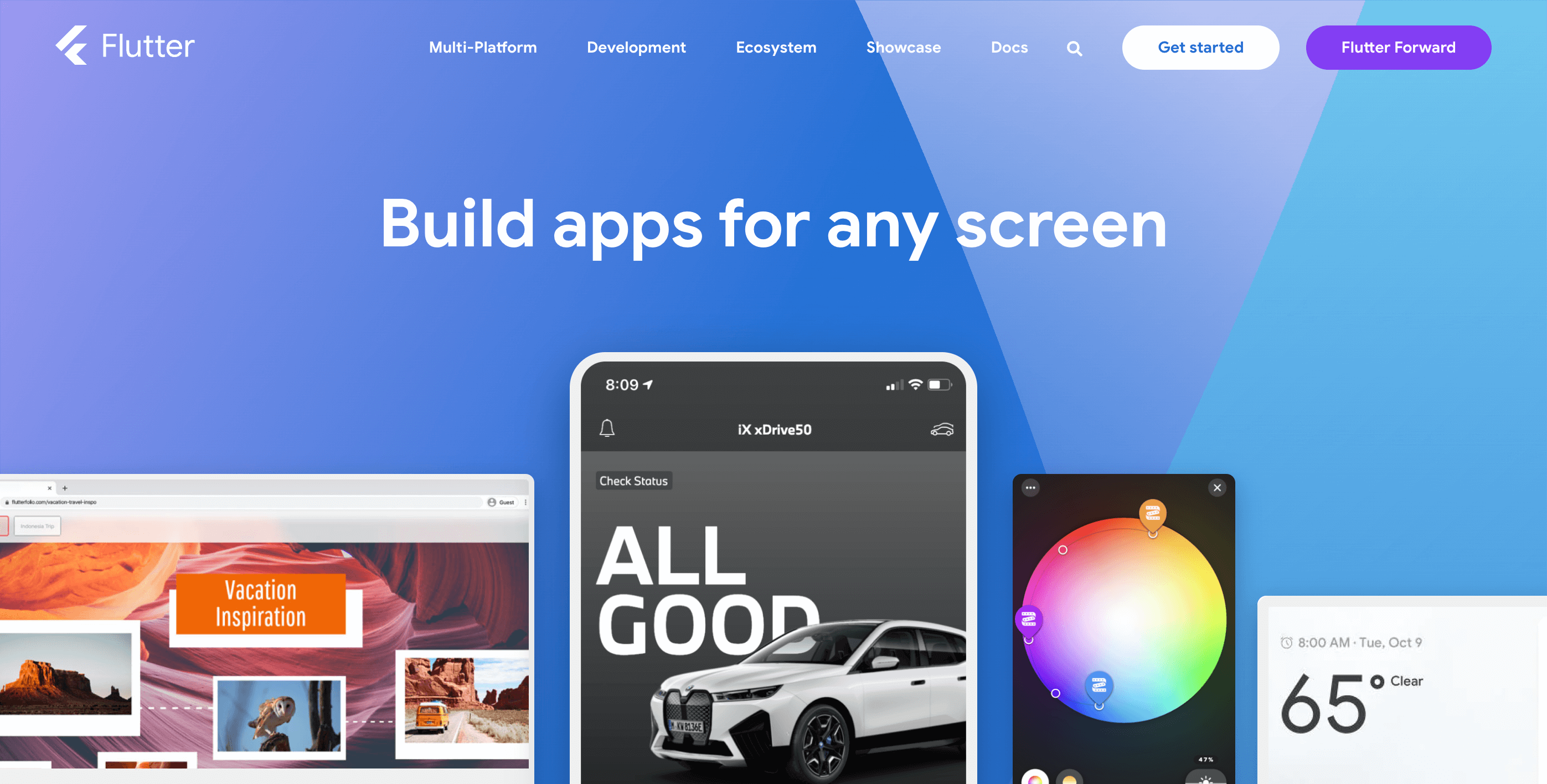Using Flutter to Optimize Your Costs and Time-to-Market

Are you worried about how much it will cost and how long it will take to make your mobile app?
Putting your ideas into a real, working application takes a lot of time and money, which is a worry for many businesses. You might have to build your mobile app using different languages, frameworks, and tools for both Android and iOS. This happens quite often. In this case, you would need two different sets of code and multiple development teams with different skills. There also needs to be a way to test both versions and make sure they are good. To get your product on the market and meet these requirements, you need a big budget and a lot of time.
Cross-platform application development has become a new way to solve these problems in the past few years. With this type of software development, you can use the same set of code to build a mobile app for both the Android and iOS platforms. Because of this, it costs less and takes less time to make your app without lowering the quality. Flutter is one of the best cross-platform development frameworks of the last few years.
Flutter: A Leading Cross-Platform Development Framework

Before we can talk about what’s good about the framework, we need to know what it is. Google made Flutter an open-source, cross-platform development framework, according to the site for it. It works with Dart, a programming language made for fast apps that work on any platform and are optimized for the client. The best thing about Flutter is that it lets you create beautiful, natively-compiled, cross-platform apps from a single codebase. It is a flexible, high-performance mobile SDK that can be changed to fit the needs of your app. Businesses of all sizes around the world are building with Flutter, including:
- BMW – scaling customer-centric product development at BMW Group with Flutter
- Abbey Road Studios – reinventing the songwriting process with Flutter
- Rive – to enable developers to create beautiful, multi-platform illustrations
- So Vegan – So Vegan wins Apple’s App of the Day twice with Flutter
Reduce Development Costs

Many businesses, from new ones to small and medium-sized ones, have trouble keeping their projects within their budgets.
With Flutter, there are many ways to solve the problem of high development costs. First, using the same codebase for both Android and iOS is a benefit of the Flutter Software Development Kit (SDK). Basically, instead of hiring two teams of developers with different skills to make different versions of your mobile app for Android and iOS, you can work with a smaller team of Flutter developers. The second is reducing testing time. Using the Flutter SDK, testing and quality assurance can be done on just one version of the app instead of having to do it twice for different platforms. Lastly, Flutter’s “Hot Reload” allow developers to try things out quickly and easily, create user interfaces, add features, and fix bugs more quickly. Also, if there is a record of the source code right inside the running application, the code can be used right away in less than 2–3 seconds without having to reset the application.
By making your mobile apps with Flutter, you can use fewer developers and tools, work on a single codebase, make quality assurance and testing easier, and save money on overhead.
Speed Up Time-to-market

Startups and smaller businesses put a lot of focus on putting out a Minimum Viable Product (MVP), which lets them test their ideas, make money, and get feedback right away. An MVP is a piece of software that has just enough features for early users to try it out and give feedback on how to make it better. With the Flutter SDK, developers can quickly build a mobile app and get a minimum viable product (MVP) up and running.
As was said earlier in this article, Flutter’s native cross-platform code compilation means that a mobile app doesn’t need two different codebases for Android and iOS. This not only cuts down on the time it takes to build the app, but also makes the QA and testing phases of making the software much easier.
There are Flutter tips and tricks that can make app development easy and efficient. With these tips and tricks, you can save time by making Flutter app development go faster, improving the way you code, and getting a lot more done in a shorter time period. One of them is using SizedBox, which is lighter as compared to Container. It consists of a const constructor that can help you fix whitespaces in a layout. Introduction Screen is also a cool design feature that creates a unique introduction screen easily. Another cool new feature in Dart 2.3 is Spread Operator. It allows developers to make a conditional UI widget with nested conditions.
Because Flutter has its own way of putting together the user interface and doesn’t use platform primitives, developers won’t have to deal with as many bugs, limits, and differences between different versions that are specific to the platform.
Open-source Framework

Github flutter. (n.d.). https://github.com/flutter/flutter
It’s easy to find third-party libraries when the development community is busy. Online, developers can find a lot of free packages that they can use to make Flutter apps. The number of libraries on Flutter’s official resources has grown over time, and this will keep happening. Having a lot of free tools from the community to use when making Flutter apps saves developers time and money.
Overall, Flutter is a great cross-platform development framework for making mobile apps, especially when you need to lower your development costs and speed up your time-to-market.
Do you want to have a Flutter app made for your business? Send an email to info@jway.com to talk to one of our Flutter experts for free.
Resources: